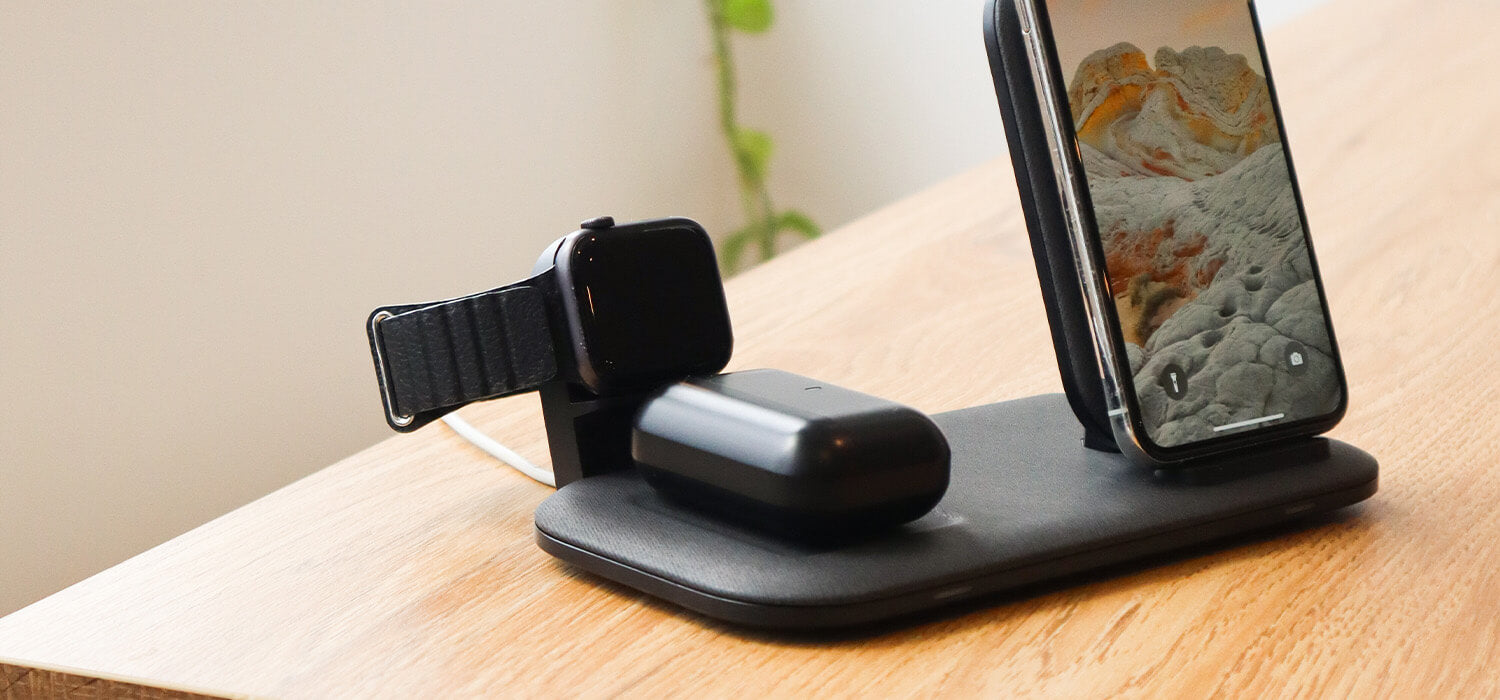A lot has changed since the launch of mobile phones in the early ‘70s. Back then, mobile phones had only a few functions and features—most notably, for calling or texting other people who also have their mobile phones. However, as humanity’s needs have changed, so have handheld devices.
Nowadays, people use mobile phones in a number of ways, similar to how a computer can do almost anything. Along with their improvements in use, mobile phones have also updated their overall design, reinventing the idea of charging. Although mobile phones still utilise wired charging, almost all upcoming models have already integrated wireless charging into their systems.
But how does wired and wireless charging benefit mobile users and which charging method is best?
Benefits of Using Wireless Chargers
The most notable struggle when it comes to charging is having to untangle the cord that comes with the phone upon purchase. Most of the time, the wire is also too short and can lead to ineffective use during a charging session. Wireless charging eliminates the need for wires or cables to fill up a mobile phone’s battery.
As a result, people can charge their phones without having to worry about tangled wires and cables. However, one of its downsides is that wireless charging needs the phone to be laid on the charging platform at all times. Removing it from the platform stops the charging process, making it inefficient for people wanting to use their phones during a charging session.
Recently, tech company giant Apple has developed a way to eliminate the issues that come with wireless charging. By embedding a magnet on both the charging platform and the phone itself, the company has invented the MagSafe technology which allows people to stick the wireless charger to their phone and allow them to use them during the charging session.
Overall, wireless charging technology is a safer way to fill up mobile batteries as it secures the power supply. As a result, mobile devices will not be subjected to the fluctuating power supply which may cause damage to the battery, lessening its duration of use. In effect, people can mitigate the chances of ruining their battery packs while avoiding costly repairs and replacements.
Benefits of Using a Wired Charger
On the other hand, the use of wired chargers provides an efficient and steady supply of power throughout the charging duration. Although wireless chargers provide the luxury of not having to use cables and wires, wired chargers provide the effectiveness of a steady power supply that also eliminates the need to lay the mobile device on a charger platform. As a result, users can continue to do their usual activities while charging their mobile devices in a traditional manner.
In a test done by How-To-Geek, a popular tech blog online, they claimed that charging using wireless chargers is an inefficient way to fill up a mobile phone’s battery. The charging platform also generates more heat compared to the usually wired chargers, causing more damage to the phone and the battery itself. The test also found out that it generally takes at least an hour longer to fully charge a mobile phone through a wireless charger.
Conclusion
Both wired and wireless chargers have their pros and cons. However, the best thing about them is that they offer choices for two types of people: If you’re someone who can’t put down their phone even during charging sessions, use a wired charger. But if you’re someone who doesn’t mind putting their phones down for a while, a wireless charger suits you better. But regardless of which charges you use, make sure to buy legitimate chargers to avoid damaging your phones.
Mobilebeat is one of the best sources for wireless chargers in Australia. Our goal is to provide our customers with their orders after 24 hours of them purchasing the item on our website. But aside from phone wireless chargers for cars, we also offer other mobile accessories from leading phone manufacturers. Visit our website today and get as much as a 10 per cent discount when you buy two or more items.

